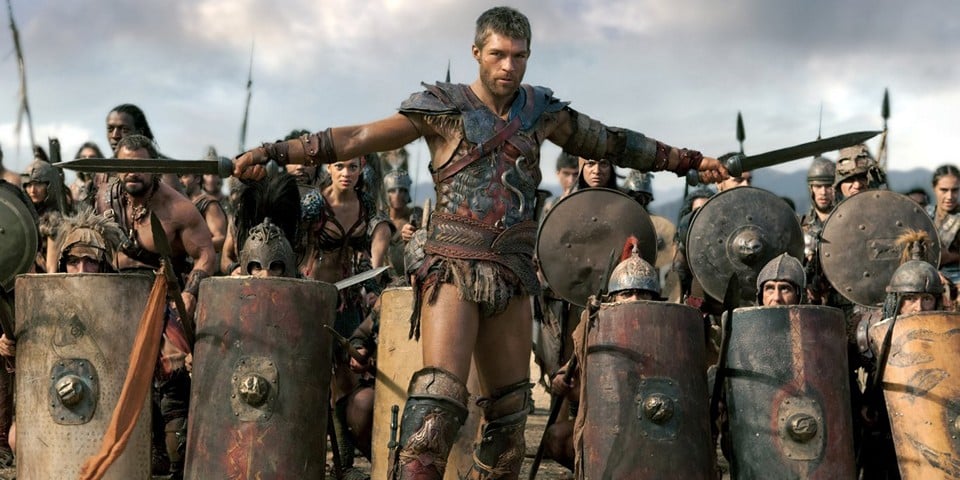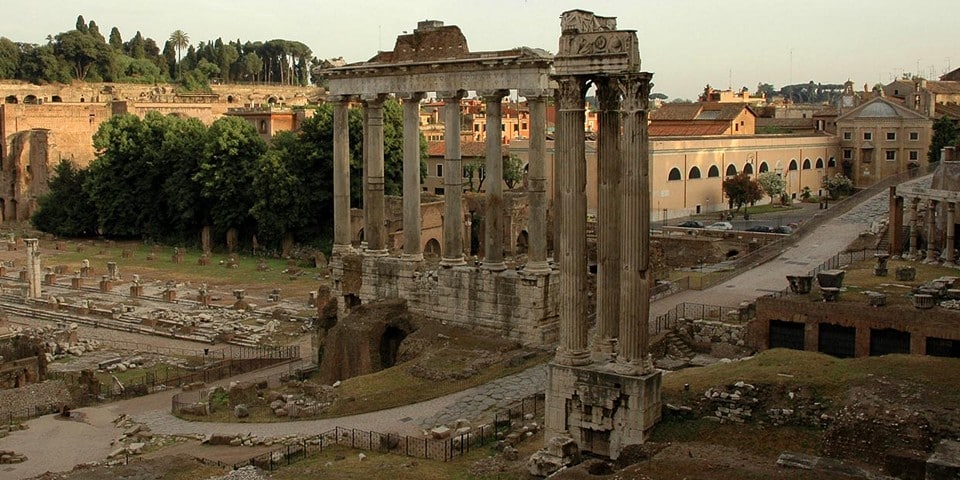While exploring Rome and Italy and marveling at the preserved landmarks, every tourist ponders why such a mighty civilization came to an end. The decline and fall of the Roman Empire cannot be attributed to a single cause.
Page Contents
External Enemies
One version links the demise of the Roman Empire to the year 410 CE when Gothic tribes led by Alaric invaded the territory of Rome. As Christians, the Goths refrained from mass killings and destruction but looted valuable treasures and ornaments from buildings.
According to another version, Rome was utterly destroyed later in 476 CE by Odoacer, the leader of the Germanic tribe known as the Heruli. Odoacer compelled the last Roman emperor, Romulus Augustus, to abdicate the throne.
However, many researchers believe that the decline of Rome began much earlier and was caused not only by such evident reasons as the raids of external aggressors. The onset of crisis in the Roman Empire can be traced back to the 3rd century when the political, economic, religious, and cultural life of the Romans underwent significant changes. Historians now identify over 210 reasons for the fall of Ancient Rome. Let’s focus on some of them.
Lack of Strong Leadership
The Roman Empire witnessed frequent changes of emperors and rulers of regions and provinces who lacked political power, authority, and foresight.
Increasingly, individuals from non-Roman nationalities assumed positions of power, which also diminished authority and undermined the patriotic ideal.
Barbarization
A significant portion of Rome’s population during its decline consisted of representatives of barbarian tribes who lacked advanced culture and ideology. Due to the disparity in the development of social relations, the assimilation of these tribes’ members into Roman society was minimal. However, Rome had to maintain peaceful relations with the barbarians as a substantial part of its army was composed of them.
Army Crisis
The external enemies, who attacked from all sides with small and large detachments, encountered little resistance from the Roman army, which was weakened by poor maintenance and extreme exploitation. The army lacked strong leaders and was not inspired by a patriotic ideal.
The military commanders appropriated a significant portion of the soldiers’ pay and provisions, leading to extreme demoralization among lower ranks. Incidents of looting targeting fellow countrymen increased. The ranks of the armed forces were replenished to a minimal extent due to several reasons:
- The decline in birth rates;
- The reluctance of landowners to enlist their slaves and hired workers as soldiers, fearing the loss of cheap labor;
- The reluctance of city dwellers to join the army due to low wages.
These phenomena are sometimes associated with a movement known as pacifism. However, the main cause of the crisis was the collapse of the professional army, loss of military discipline, and an increase in poorly trained recruits—former peasants—who settled within the territory of the Roman Empire, including barbarians.
Slaveholders and Slaves
The official version found in school textbooks suggests that Rome was destroyed by the slaveholding system. Exploitation gave rise to slave uprisings and revolts, which occurred regularly. The uprisings varied in scale: landowners’ dwellings were set ablaze, tools and livestock were destroyed, and slaves refused to work.
Military assistance was required to suppress slave uprisings, but the military barely managed to fend off attacks from external enemies.
Slaveholding led to the extreme decline of agriculture and the destruction of the country’s economy.
- Read also: Spartacus uprising.
Economic Crisis
The Roman Empire experienced a period of fragmentation into provinces, with large estates being divided into smaller ones and partially leased to small landowners and slaves. Subsistence farming became prevalent, the share of processing industries in the economy decreased, and transportation costs increased. Trade reached an extreme level of decline, and relations between some provinces ceased completely.
The state increased taxes, but the population’s solvency sharply declined, making it impossible to pay taxes. Inflation was followed by a reduction in the amount of money in the country.
Small agricultural holdings began to merge into communities or seek protection from large landowners, leading to the emergence of large feudal lords and the ultimate ruin of small peasantry.
Demographic Crisis
The economic decline and consecutive years of poor harvests led to famine and outbreaks of infectious diseases in the country. Mortality rates increased, and birth rates sharply declined. The government issued several decrees to support families with children and grant privileges to children of barbarians. However, the number of elderly individuals steadily increased in Rome, and society aged.
Social Causes
Simultaneously, the authority of ruling circles declined, while the influence of capital and the wealthiest individuals in the country grew. The number of government officials increased, the bureaucratic apparatus strengthened, and corruption intensified.
The middle class gradually fell into poverty, urban culture declined, and production and trade deteriorated, leading to mass unrest. The other side of the coin was the so-called social apathy, the erosion of spirituality and patriotism.
Spiritual Crisis
Gradually, the ideal of a harmoniously developed individual, a proud Roman who serves his city-state and builds his life on the basis of social principles, was destroyed and forgotten. A crisis of art emerged, affecting literature, architecture, and sculpture.
The moral decay of the population is often associated with the proliferation of vices, debauchery, and homosexuality.
- Read also about The Customs of Ancient Rome
Christianity
One of the reasons for the fall of the Roman Empire is attributed to the cessation of the persecution of Christians, which was legalized by the edict of Emperor Constantine in 313 AD. From that year onwards, Christianity was recognized as equal to pagan faith. It is known that in the late 4th century, the destruction and looting of pagan temples followed under Emperor Theodosius the Great, carried out by a crowd of Roman residents under the guidance of Christian monks.
Even more destructive was the presence of various factions within Christian doctrine. They caused confusion and discord, divided the people, made them doubt, undermined national unity, and weakened its resistance to external enemies.
Thus, the disintegration of the Roman Empire was conditioned by a combination of contradictions within a state that had lost its political, ideological, and religious unity.
 Italy for me From Italy with love
Italy for me From Italy with love




